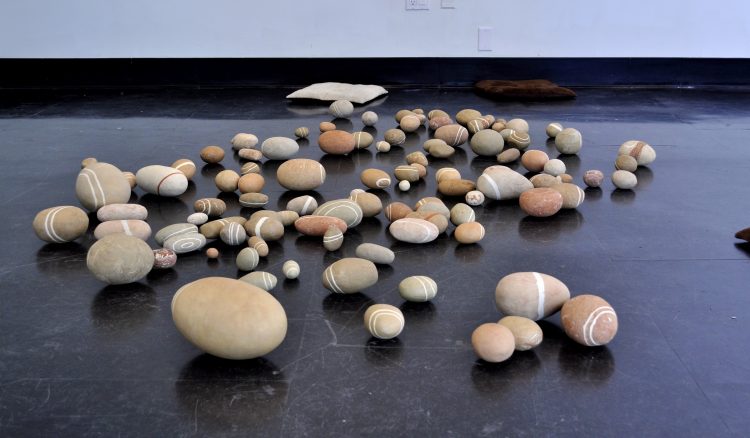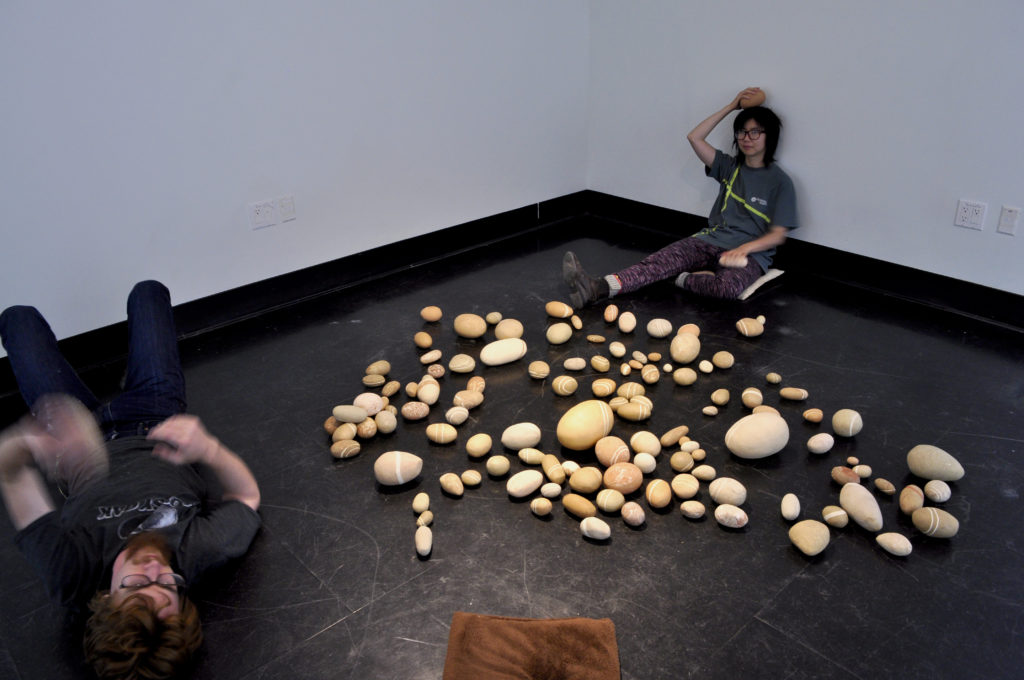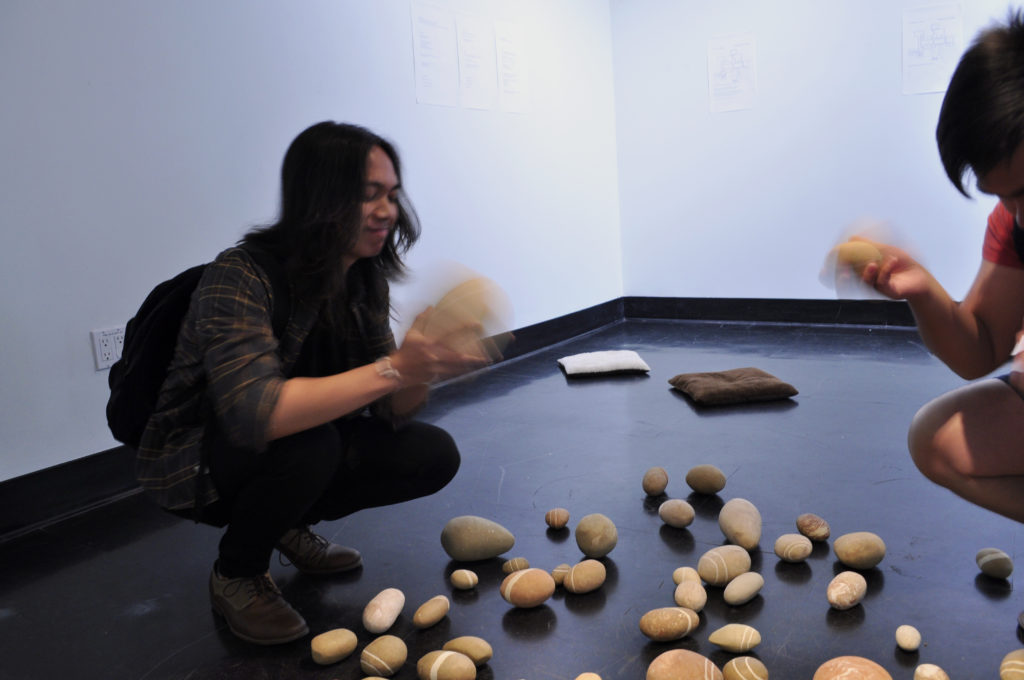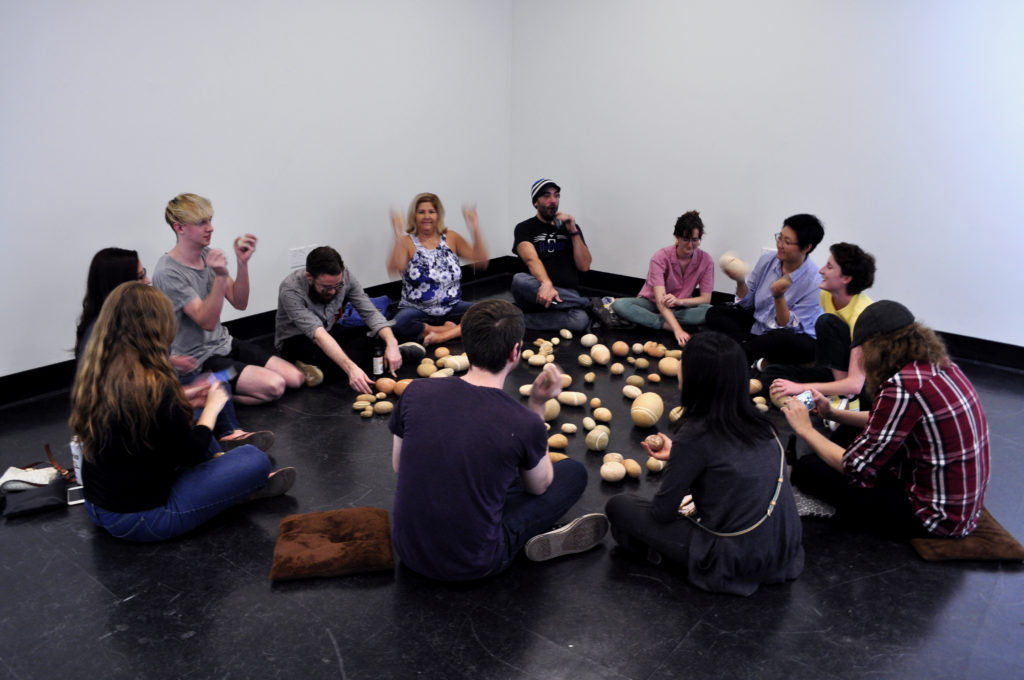The River Rock Ensemble is a set of 150 musical river rocks. The rocks are musical instruments, shakers that can be shaken in many percussive ways. The instruments are intended to be played together as a large set. They are shaken in mass, creating a kind of white noise; like the sound of the flow of a river or the rushing of rapids.
The scores I have created are used to stage symbolic rivers. Players move through physical space while they play, forming a mass that flows from one location to another. The score changes the way the rocks are shaken at different locations. Different geographic places become narrative events as the river flows.
This group of instruments has an active and inactive mode. It is activated through performance. I have added some scores for visitors who see this set in its inactive state. The rocks can be freely touched played at any time with the aid of the personal scores.
The instruments are made of clay, they are hollow and filled with clay beads. They are made from layers of different clays wedged together to make marbled textures. Each rock has been fired to cone 4 (2150*F). This finish makes the ceramics have a dry earthy texture, and also allows the sound to ring clearly like the sound of metal chimes.
This is only the beginning of the life of this ensemble. The long term goal is to have over 300 rocks and to have performances at many locations. The rocks will be performed outdoors in natural spaces, especially riverbeds. The scores will be collaborative, working with other artists to create unique new scores. The rocks will be available for the use as musical instruments in many contexts, and I openly accept offers for collaboration.
I view the rivers created by these river rocks as surrogate rivers, ones that fill in the place of the rivers in Southern California that do not flow. I believe there is the opportunity for community engagement with the environment through these rocks. I made these rocks from a deep longing for the sound of a river. I view the performances as symbolic gestures that place people in the center of the experience. I believe that this kind of engagement opens up many questions about our interactions with the natural world and the need for a surrogate river.
Personal scores
The rocks in this room are here for interacting with.
Sit on the floor, feel free to take a pad to sit on.
These are scores to perform in the gallery, by yourself or as a small group.
Meditations –
Sitting with the river rocks,
shake them softly.
Roll the rocks against your body,
put a rock against your face,
against your ear,
move your head around,
feeling the rock connected to you.
—–
Play a rock as softly and continuously as you can,
sustain this sound.
—–
Create a heartbeat with a rock.
Create a breath.
Make the rock talk.
Landscaping –
Sort the rocks by size.
Sort the rocks by pitch.
Sort the rocks by color.
Searching –
Find the rocks with rust colored stripes.
Find the rocks with only 1 stripe.
Find rocks with no stripes at all,
find the plainest rocks.
Sets –
Find two rocks that you like the sound of together,
they can sound similar or different.
Playing them together,
play different short and long patterns.
Find set of rocks that you like the sound of,
playing them in different sequences,
make a song out of it.
Observations –
Watch others perform
Watch the gallery
Listen to it
Small group scores
These are for a group of 2 or more people.
Sets-
Pick out a set of rocks that each of you likes,
they can be similar or different from each other.
Each hold a rock,
play between each other in different patterns.
Play these rocks alternating between yourselves,
interlock.
Make patterns of long and short sounds,
playing rhythms,
play a melody between yourselves.
—–
Create a set of rocks that sound good together.
Play each of them softly and continuously.
Sustain this sound together.
See what subtle motions will effect the sound.
Make it more intense,
less intense,
making drama,
make a narrative.
—–
Have another person roll a rock up and down you back,
roll a rock up and down their back.
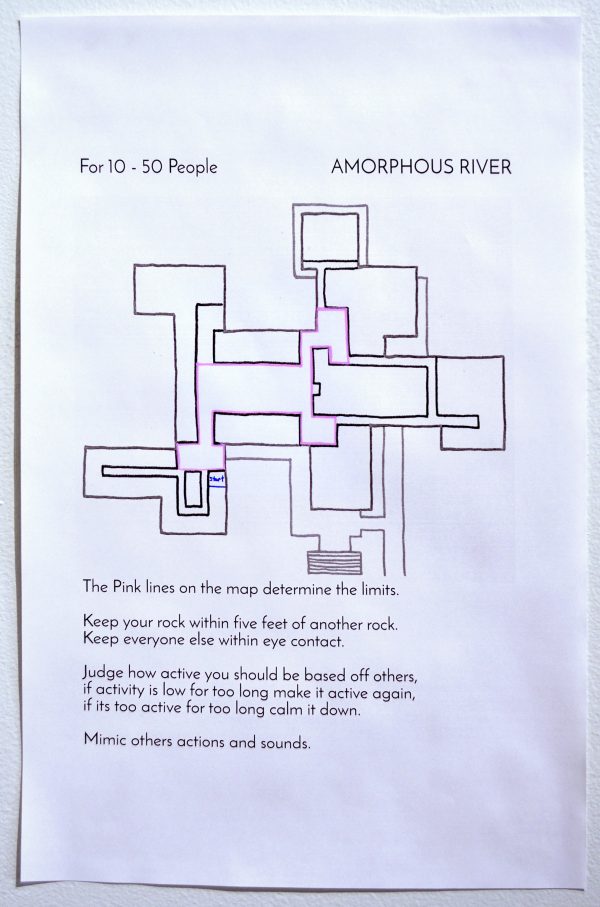
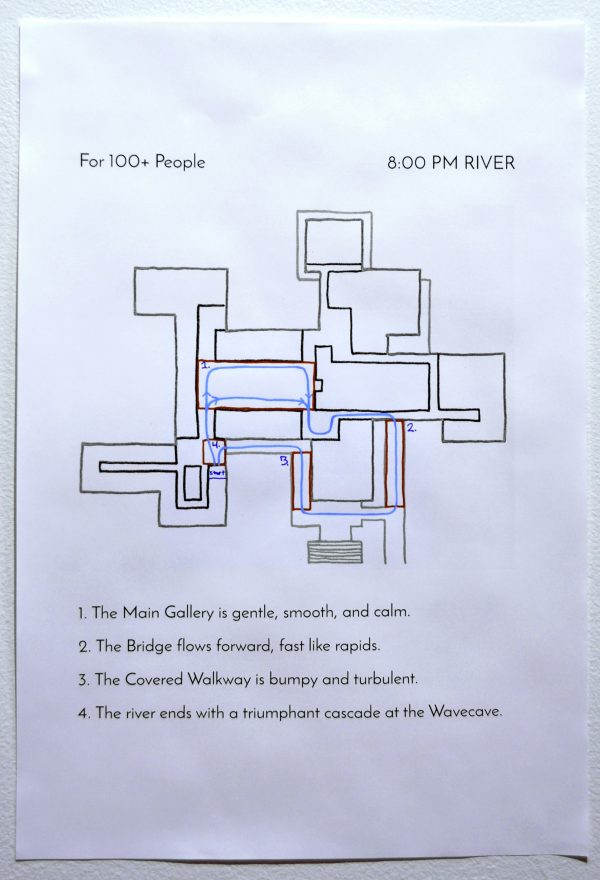
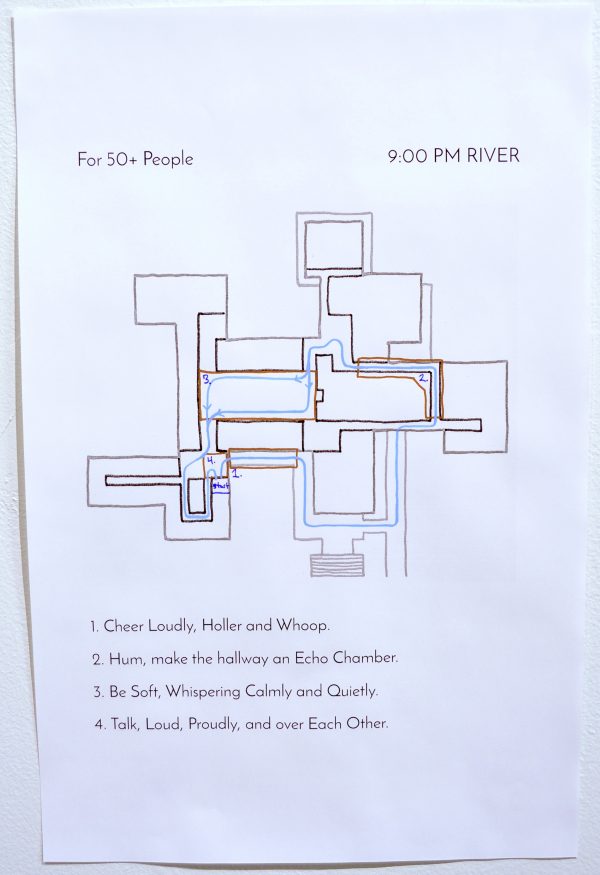
8:00 PM on October 26th was the first performance with the River Rock Ensemble. This river was scored with a map of CalArts with geographically linked events that the performers played with their rocks. Players flowed as a group throughout the halls with each region representing different behaviors of a river.
A similar score was used at 9PM, which included the use of voice along with playing the rocks.
At 10:30 PM was the third performance, Amorphous River. This river was scored with a generative score of constructed rules that use the behavior of other performers to determine what each performer does. The score has a map showed only the limits of the campus of where the players could move to. Each performer needed to keep within 5 feet of one another, each performer needed to keep all other performers with in eyesight. The movements and excitement level of other performers is taken into account of ones actions. If you want the river more active or less active you can judge the behavior off of others. Each person can replicate others actions that they like, also each performer can make actions and see if they will be reverberated.
